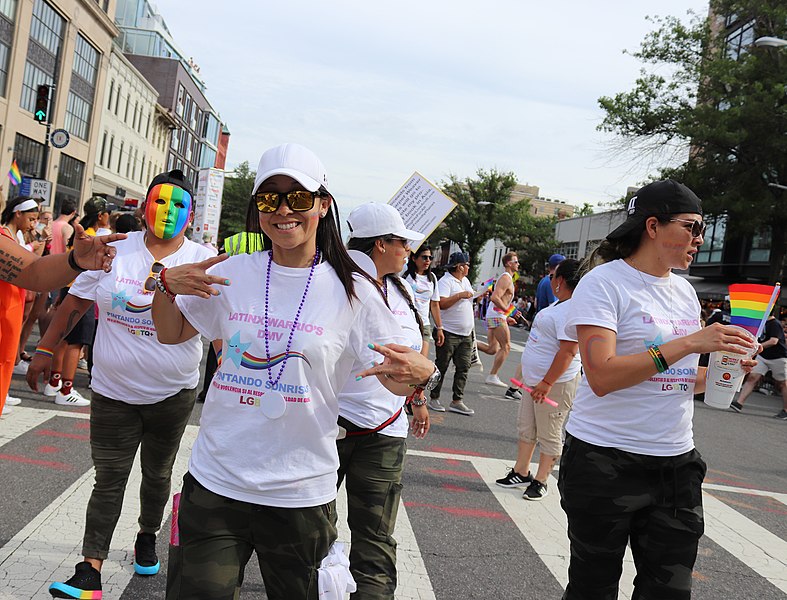- 14 3402-5578
- Rua Hygino Muzy Filho, 737, MARÍLIA - SP
- contato@latinoobservatory.org
 Wikimedia Commons
Wikimedia Commons
According to a special publication by NBC News, Latino identity is becoming more fluid and varied than ever before. A biracial family in Wisconsin. A Black Dominican in Massachusetts. A Cuban of Lebanese descent in New York. A Mexican Chinese Californian. A white man from Texas. A Brazilian German in Arizona.
Amid dramatic population growth, rising intermarriage rates, geographic dispersal and the growing use of DNA technology, millions of Americans are expanding the definition of what it means to be of Latino or of Hispanic descent. As racial, ethnic and language boundaries evolve, Latinos are defying categorization or definition in narrow terms.
Almost 1 in 5 Americans, 62.6 million, are Hispanic, according to the latest 2020 census numbers, a 23% increase from 2010. “Latinos like Reyes, who are multiracial or have mixed backgrounds, are one of the fastest growing groups, said Jens Manuel Krogstad, a senior writer and editor at the Pew Research Center”.
The number of Latinos identifying as more than one race in the 2020 census has grown from 3 million to 20.3 million since 2010, while those identifying as only white dropped drastically, from 26.7 million to 12.6 million. One of the drivers of those changes is that Latinos and Asians are the most likely to intermarry. In 2019, almost 4 in 10 U.S.-born Latinos, 39%, married someone who wasn’t Hispanic. The majority of Latinos, 70%, are U.S.-born, According to PewResearch Center data.
Increased interest in DNA ancestry and genealogy has shifted the way people think about themselves, said Robert Santos, the first Latino to lead the Census Bureau.
“At least four ancestry companies reported substantial increases in their Latino clients since the Covid-19 pandemic began in 2020. […] Because Latinos are inherently of mixed ethnicity, DNA and ancestry tests often help families get a glimpse of why relatives in the same family can look so widely different”, according to NBC.
“In 2017, an estimated 276,000 Muslims in the U.S. — roughly 8% of the country’s Muslim population — were of Hispanic descent, up from 6% in 2011”, according to the Pew Research Center.
According to the same institute, “while 88% of Hispanic adults say it’s important for future generations to speak Spanish, later generations are less likely to speak it.
The Pew Research Center stipulates that “an estimated 5 million American adults with Hispanic ancestry, or 11%, said theydon’t identify as Hispanic or Latino”.
“Race is still the biggest factor in the way many Latinos see themselves — and the way others see them. Fifty-seven percent of Hispanic adults the Pew Research Center surveyed last year said skin color shapes their daily life experiences, and 62% said they believe having darker skin hurts their ability to get ahead in the U.S. […] There are about 6 million Afro Latinos in the U.S., about 12% of the adult Latino population”.
“There are more people of African descent in Latin America and the Caribbean than in the U.S., about 200 million compared to 47 million, “and people are still asking if we’re Black,” said Yvette Modestin, a Black Panamanian who founded the organization Encuentro Diaspora Afro in Boston 25 years ago”, according to NBC.
“For later generations of Latinos and those who are mixed, claiming “their Latino identity will be an active choice they make. Expressing their Latino identity will require a certain amount of work and a certain amount of pride in their background”, said Krogstad of the Pew Research Center to NBC.
“People’s shifting racial and ethnic experiences
have been defying the terms and categorizations long used to describe Latinos –
so much so that Karin Orvis, the U.S. chief statistician, a position at the
Office of Management and Budget, is revising race and ethnicity standards
federal agencies, including the Census Bureau, use to describe people”,
according to NBC.











